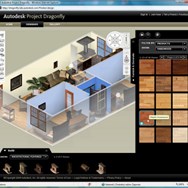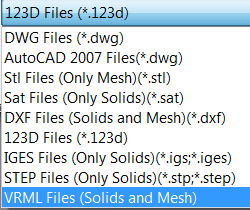

- #123d design vs sketchup software#
- #123d design vs sketchup professional#
- #123d design vs sketchup download#
#123d design vs sketchup software#
I love the concept and the capabilities of the software suite, but the execution leaves something to be desired. I have had the most success using this software with upper middle and high school students. It is appropriate for intermediate skill hobbyists and students with previous CAD experience.
#123d design vs sketchup professional#
Autodesk worked hard to provide a free, intermediate level CAD ecosystem which was free and accessible to the beginning to intermediate user.Īutodesk’s 123D is one of the most mature software families (6 years and running) and serves as a stepping stone to professional level CAD software. 123D uses cloud-based social community and project storage to allow makers to sculpt, design, manufacture and share complex 3D parts. This week I took some time to explore Autodesk’s 123D family of CAD/surface modeler/maker-magic software. Most apps will become incorporated into their 3 powerhouse apps: Tinkercad, Fusion 360, and ReMake. 16th, Autodesk announced they would be shutting down the 123D App family in “early 2017”. It's intended to allow new users to get up to speed while leaving in more powerful features for more advanced users.Update: On Dec. Pramuk says 123D Design covers much of the same ground as the original 123D app (now known as 123D Beta 9) however it has been built fresh from the ground up, based on what they learned from their users. And as 123D Design is cross platform, the interface is changeable too - you might start working in the iPad but perform the finishing touches from your PC. Create an object in 123D Design, then send to 123D Make to convert it into a format suitable for laser cutting. Through Autodesk's cloud backend, designs can be passed between the various apps. The software also plays nicely with the rest of the 123D family. Image courtesy of Autodesk 123D Design on the iPad is more streamlined than its desktop cousin, in keeping with the interface and the capabilities of the device. Watching Pramuk demonstrate the software, I was reminded of *Spore'*s Building Creator.ġ23D Design on the iPad is more streamlined than its desktop cousin, in keeping with the interface and the capabilities of the device. It's a little bit like Lego, a little bit like clay, and it doesn't take long for any creation to become completely unique. From there, you can adjust the size and shape of the parts with a variety of sculpting tools. A new user can start assembling their own robot from these pieces, clicking and dragging as the software intelligently snaps the parts together. Each kit is a collection of pre-made parts that Autodesk's designers think you might enjoy using to customize a design.įor instance, the robot kit has a collection of heads, eyes, arms and other robotic components.
#123d design vs sketchup download#
There's a house kit and a train kit and a robot kit, with many more to come, available for download from the web.


The best illustration of this approach can be seen in the prepackaged kits that ship with the software.

_123D Design _(November 2012): Create 3-D shapes from scratch or from templates to facilitate 3-D object printing.To do this, Autodesk has taken pains to flatten out the learning curve as much as possible. 123D Make (May 2012): Converts 3-D objects into templates suitable for laser cutting and reassembly into physical 3-D objects. Autodesk's servers do the processing while you wait. _123D Catch _(May 2012): Generate a "scanned" 3-D model by taking photos of an object. 123D Sculpt (August 2011): iPad app that allows you to sculpt on your tablet in a clay-meets-fingerpainting interface. The 123D Timeline:_123D _(April 2011): Desktop software Autodesk's first foray into DIY 3-D design. According to Christian Pramuk, product manager for the 123D apps, the goal was to build something that was super intuitive for new users, while having enough features to keep intermediate and advanced users interested. 123D Design is a cross-platform 3-D modeling tool - it runs on iOS, Mac, PC, or in a web browser. It's the latest addition to their family of free 3-D modeling applications for the rest of us. Today, Autodesk is launching 123D Design. 123D has gone on to spawn a family of specialized apps, all linked together via cloud sharing and all aimed at making it as easy as possible to turn your ideas into physical designs. They started their new push in 2011 with the release of 123D, a piece of desktop software meant to democratize 3-D design, and then turned heads by acquiring Instructables, a community for sharing DIY how-tos. If a revolution is coming, Autodesk wants to be at the forefront. For a company best known for being the maker of high-end software used in construction projects (NYC's Freedom Tower), industrial design (Tesla cars), and blockbuster Hollywood special effects ( Avatar), Autodesk sure has invested in a big way in the future of DIY.


 0 kommentar(er)
0 kommentar(er)
